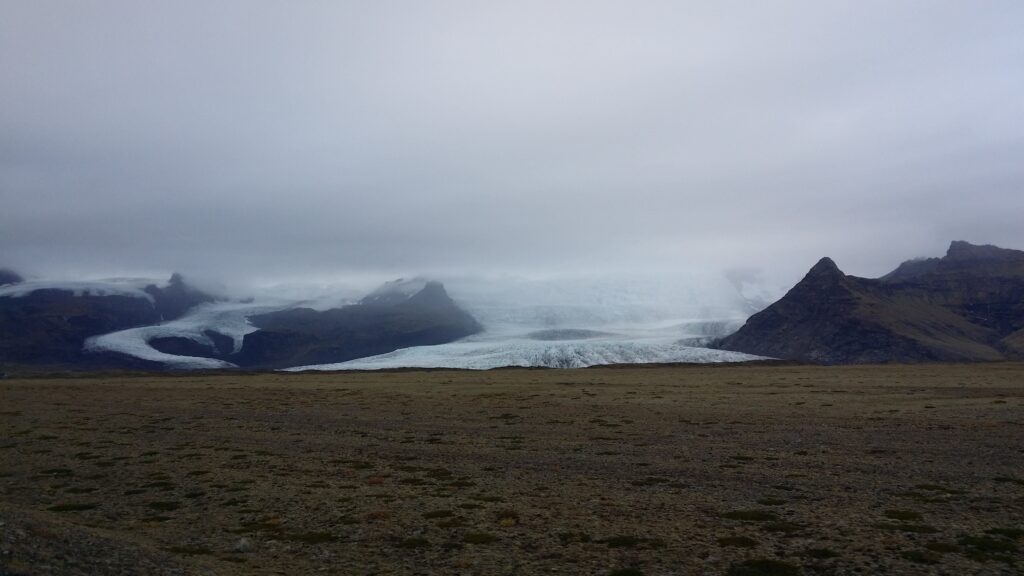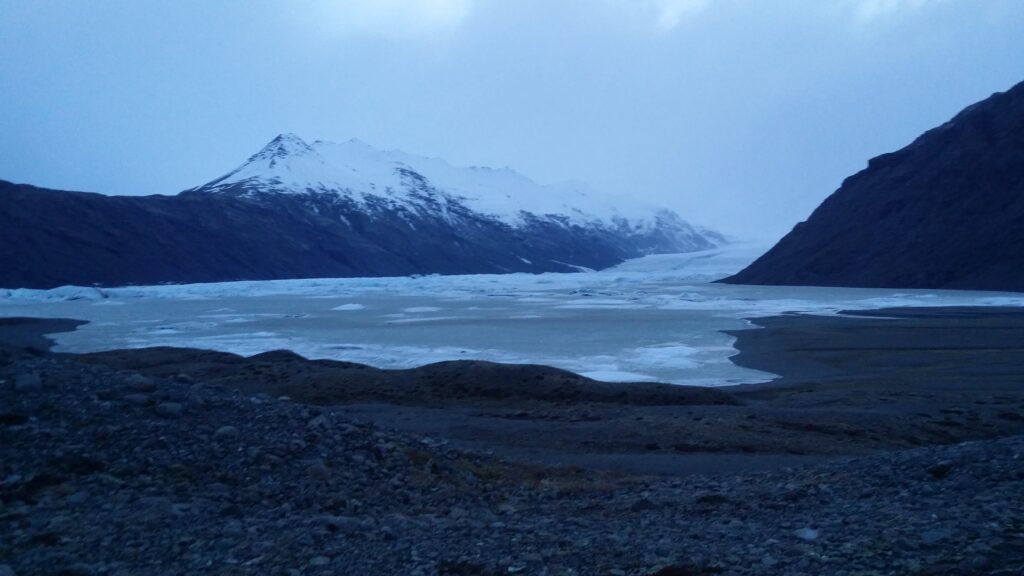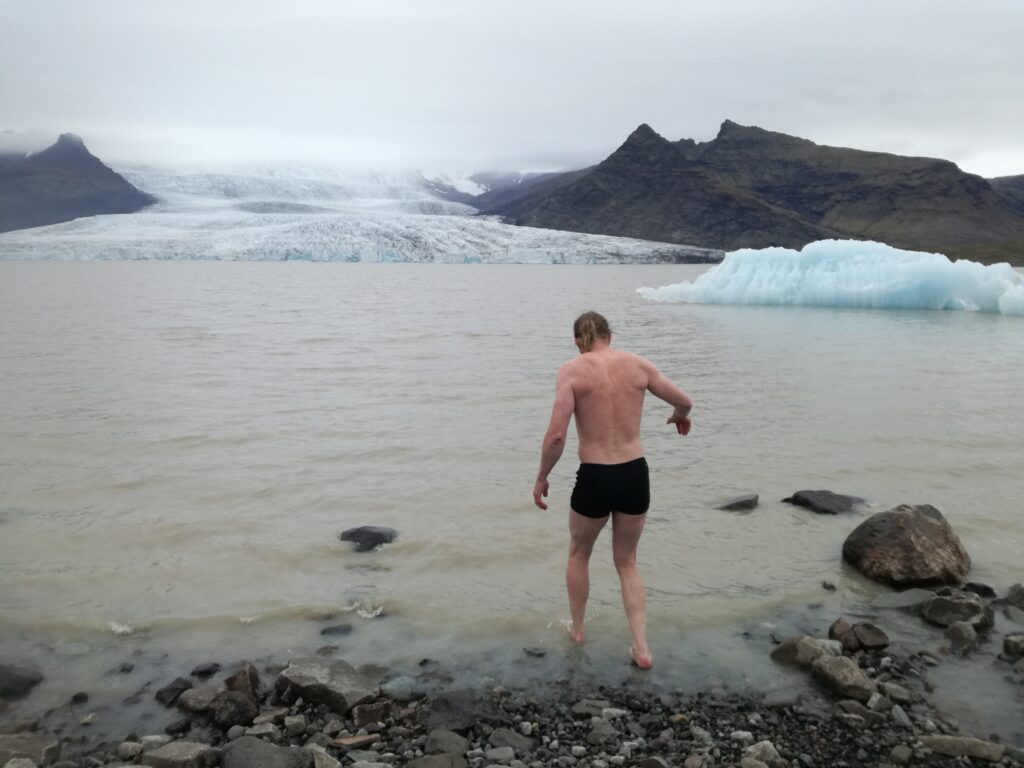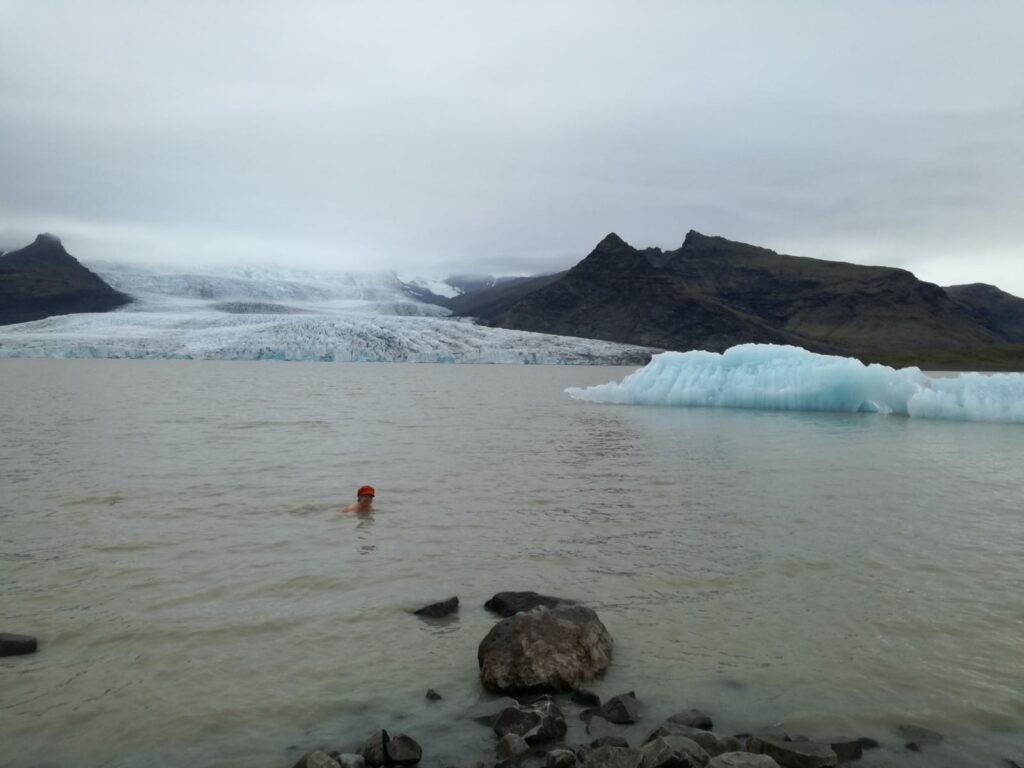After a not very successful mud bath in front of Hoffellsjökull, it was time to step up the glacier baths a little. If the lake in front of the glacier is deep enough, the probability is high that icebergs will break off from the glacier and start floating in the glacier lagoon. We wanted to swim with icebergs! One possibility is Fjallsárlón. Drive north from Vik i Mýrdal for just over 2 hours (or 15 km southwards from Jökulsárlón).

Fjallsárlón, is named after a glacier from Vatnajökull called Fjallsjökull (the Mountain Glacier). The lake is approximately 4 km2 and 160 meters deep. Above the lake you can see the famous snow-covered volcano Öræfajökull. The name today means wasteland. The volcano has had two eruptions after the settlement of Iceland. The first and largest of these occurred in 1362, when more than 400 people were either killed (by floods) or were forced to move (by ash fall). It took many years before people settled in the area again.
One thing about volcanic eruptions is lava flow or ash rain, and the damage to houses and land because of this. Another issue is when the volcano is under ice, which melts during the eruption. The melt water creates a large flood that washes away everything in its path. In this case, four parishes! Floods from glaciers have been given a specific word in Icelandic: Jökulhlaup (Glacier Run).

Various activities are offered at Fjallsárlón, including kayaking, sailing and boat trips. We haven’t done that! But we have tried swimming in Fjallsárlón twice. Bathing in March was impossible, as the lake was frozen.

In September, however, we took a bath, all alone (due to covid19). Cold yes, but nice! It was wonderful to see the beautiful blue ice floating in the lake.

Earthquakes have been recorded below Öræfajökull in both 2017 and 2018, so there may be an eruption here before too long. North of the glacier is Iceland’s highest mountain Hvannadalshnjúkur, 2110 m.